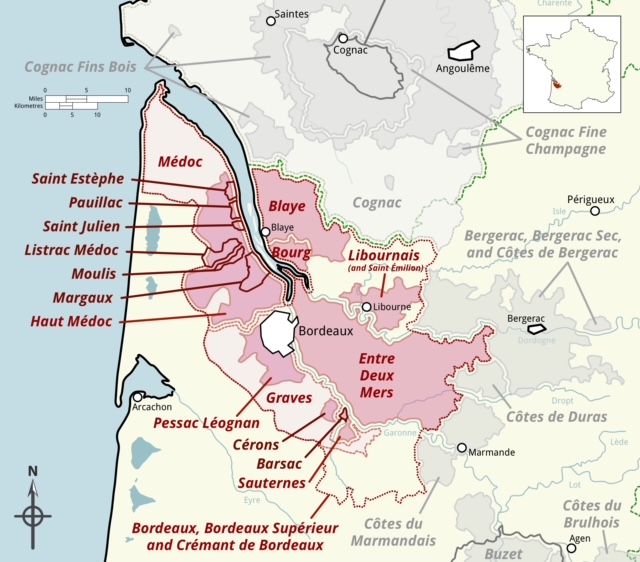The treaty marking the end of the Battle of Castillon, effectively ending the 100 Years War, was signed at Château de Pressac on 20 July 1453. The vineyard, consisting of a single block of vines, is planted on a limestone plateau which extends from Saint Emilion to Belvès de Castillon, 80 metres above the Garonne.
It also includes some plots on the clay-limestone slopes. The domaine was purchased in 1997 by Jean-François and Dominique Quenin, who have made substantial investments in both the vineyard and the winery. The property also produces a very consistent second wine, Tour de Pressac.
Perched on the limestone plateau of Saint-Émilion, Château de Pressac overlooks the valley of the Dordogne River.
Here, remarkable geology paired with the area's microclimate provide the ideal conditions for the grapevine's development.
The teams' expertise,acquired over many years and in continual development enables close monitoring of the vineyard's characteristics and its truly original location.
In a single block around the château, the 41-hectare vineyard brings together the appellation's three main terroirs in a limestone plateau, the clay-limestone slope surrounding the hill and the silty clay-limestone foot of the slope, each occupying equal parts of the estate.
In an approach designed to reflect the specificities of nature, this rare diversity of soils and sun exposure has led to the planting of multiple grape varieties and carefully adapted growing practices.
Château de Pressac is the only Saint-Émilion Grand Cru Classé today to grow six grape varieties, all perfectly planted in the areas that suit them best:
Merlot, Cabernet Franc, Cabernet Sauvignon, Carménère, Noir de Pressac (Malbec) and Petit Verdot.
Dedicated to ensuring the sustainable preservation of nature, Château de Pressac is a leading estate in terms of environmental protection. It has adopted the Environmental Management System since its creation and has been awarded Level 3 High Environmental Value certification.
The stunning, iconic terraces are another unique feature of the estate.
Formerly worked with oxen, vines were reintroduced to the steepest slopes in 1999.
All along this hillock, the south-facing slopes stretch across narrow steps that naturally prevent erosion and washout.
Together, this unique geography and the exceptional diversity of its grape varieties sculpt the nuanced richness and complexity of Château de Pressac's wines.
Plot-by-plot management has become a guiding principle, with growing practices adapted to each of the components found in the estate's rich patchwork of soils.
In the spirit of the 18th century, when it was the first to plant the grape variety that would later bear its name – the Noir de Pressac or Malbec variety
Since purchasing the estate in 1997, Jean-François and Dominique Quenin have been dedicated to bringing it to life.
100% destemmed, the harvest is vinified plot by plot. The wines are aged for 12 months in barriques, 65% of which are new. Merlot, Cabernet Franc, Cabernet Sauvignon, Pressac (= Malbec) and Carménère make up a complex register. We encounter notes of red and black fruit, spices and undergrowth. Its fine tannins and silky texture mean it has both good aging potential and can be enjoyed when young.
Small quantities of Carmenere and Malbec add a touch of spice and tannin to this densely rich wine. With acidity, black fruits and a firm core of tannins, the wine is well structured. A hint of pepper shows through with a sign of the high alcohol. Drink from 2023.
Serve at a temperature of 16°C. It will pair perfectly with the following dishes: Veau Orloff, Noix de veau braisée, Cailles grillées.





